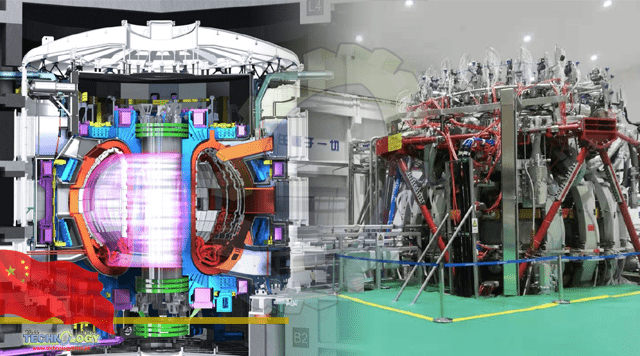The Southwestern Institute of Physics (SWIP) has officially launched a key project in Chengdu City, capital of southwest China’s Sichuan Province, to advance global nuclear fusion experiment.

By Meng Qingsheng
The project, called Helium-Cooled Ceramic Breeder Test Blanket System (HCCB-TBS), is a crucial part of the “artificial sun” project, or the International Thermonuclear Experimental Reactor (ITER) at Cadarache in southern France.
A ceremony was held on March 15 in southwest China’s Chengdu City to launch the HCCB-TBS project. /SWIP
Currently, nuclear power plants use nuclear fission reaction, in which the nucleus of an atom splits into smaller parts, to generate electricity. For nuclear fusion, however, it happens when two or more atomic nuclei collide at a very high energy and fuse together into a new nucleus. It releases an energy density many times greater than nuclear fission.
The ITER project will use tritium and deuterium, two isotopes of hydrogen, to fuel its fusion reaction. “While deuterium can be extracted from seawater in virtually boundless quantities, the supply of available tritium is limited, estimated currently at 20 kilograms,” the ITER explained.
Wang Xiaoyu, head of the HCCB-TBS project, spent nine years working with global scientists in the ITER Organization at Cadarache in France. /Wang Yumeng
The HCCB-TBS project is part of China’s involvement in the research and designing of the ITER, which was launched in 2006 in France. So far, it has involved scientists from 35 countries, including China, the U.S., Russia, Japan, South Korea and India.
Its purpose is to test whether nuclear fusion can be used to produce near-limitless clean energy. In practice, it uses a tokamak to heat plasma to 150 million degrees Celsius, 10 times hotter than the sun’s core. As the process resembles the atomic reaction that powers the sun, it’s commonly known as the “artificial sun” project. Its first phase of operational test is scheduled for 2025, with full operation slated for 2035.
The HL-2M Tokamak is a new “artificial sun” which obtained the first plasma on December 4, 2020. /SWIP
In December 2020, the SWIP commissioned China’s new-generation of the “artificial sun,” known as the HL-2M Tokamak, and achieved its first plasma discharge. It’s able to generate plasma hotter than 150 million degrees Celsius, and is expected to greatly enhance the research and development of key technologies in plasma physics research in China.
Luo Delong, head of China International Nuclear Fusion Energy Program Execution Center, told CGTN the successful launch of the HCCB-TBS project will lay a solid foundation for its future manufacturing, delivery and test operations on the ITER equipment.
“If it succeeds, power generation through fusion will help address all existing problems of energy supplies for the human kind, in a safer and more environmentally friendly way,” he added.
Originally published at Cgtn